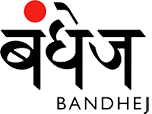
HANDCRAFTED, Sustainable Fashion
Currency

CHARAKA: The Road to Economic Independence
 |
 |
The Charaka project was started in 1994 by Prasanna, a well-known activist and theatre personality with the idea of providing employment to a large number of weavers, and offering affordable handloom sarees, fabrics and clothing to a wider customer base, with the conviction that handloom products should be accessible to all. The project contradicts the myth that handloom textiles are expensive and are best suited for elite urban markets. Often these textiles are expensive because of multiple overheads added to the product before it reaches the customer through high fashion boutiques in urban centres.
Prasanna, a self-confessed Gandhian, had the dream of setting up an environment-friendly industry to provide employment to the villagers, mostly women, in the heart of the Malnad region as an alternative to seasonal, exploitative work at the areca nut plantations where they were employed as manual labourers. The project was started with just 13 women and two sewing machines in a small shelter on the Heggodu-Varadamoola road and today this intervention has grown into a large village industry with a workforce of 800 artisans across eight districts of Karnataka.
 |
 |
The Charaka Women’s Collective has evolved into a self-sustaining and self-sufficient cooperative. Once the raw yarn is purchased from Krishna Spinning Mills in Hubli, all other processes are accomplished in-house. The weaving related activities at Charaka are not rooted in tradition or caste, but these skills are taught to anyone willing to learn. Today, there are more than 300 women who oversee each and every step of the management of handloom production, from the procurement of yarn, dyeing, reeling, weaving, printing, embroidery, tailoring, inventory and quality control to marketing.
Each woman employed at Charaka takes home an average of Rs.3000 a month. The value of this money that a woman earns with dignity, clean technology and fresh air is much higher when compared to what her counterpart in the city earns at an export-oriented garment factory. The women are all members of the collective and they pay themselves based on their performance and the profits made by the collective. They also enjoy other benefits such as creche facilities for toddlers, subsidised food, health insurance and an annual bonus.
 |
They produce a large variety of eco-friendly, cotton handloom fabrics using only natural dyes. The warp is in twisted yarn, which is easier to handle, while the weft is in singles yarn, and this allows the fabrics to drape well and absorb dyes evenly. The fabrics are dyed at their centre, using mostly locally sourced ingredients such as areca nut, eucalyptus, majistha (madder) roots, pomegranate peel and kasimkari (iron rust). Fabrics are offered in kora (unbleached white) and shades of natural indigo, pinks, browns, olives, mustards, greys and blacks in plain cross-coloured dhup chav, and in elegant stripes and checks.
They offer a limited colour range of naturally dyed fabrics and have mastered the technique of creating colour-fast dyes in seven or eight colours. Their clothes are in basic silhouettes, well finished, consistent in quality, and wearable. Initially, there was a lot of resistance as natural dyes offer a limited colour palette, but now this has become their brand identity. The women take great pride in their production and maintain the quality.
|
At Charaka, they believe in building on traditional techniques and wisdom, using modern expertise and technology to improve production processes when required. The project hopes to become a model that can be replicated to help reverse the migration of both men and money from villages to cities.










